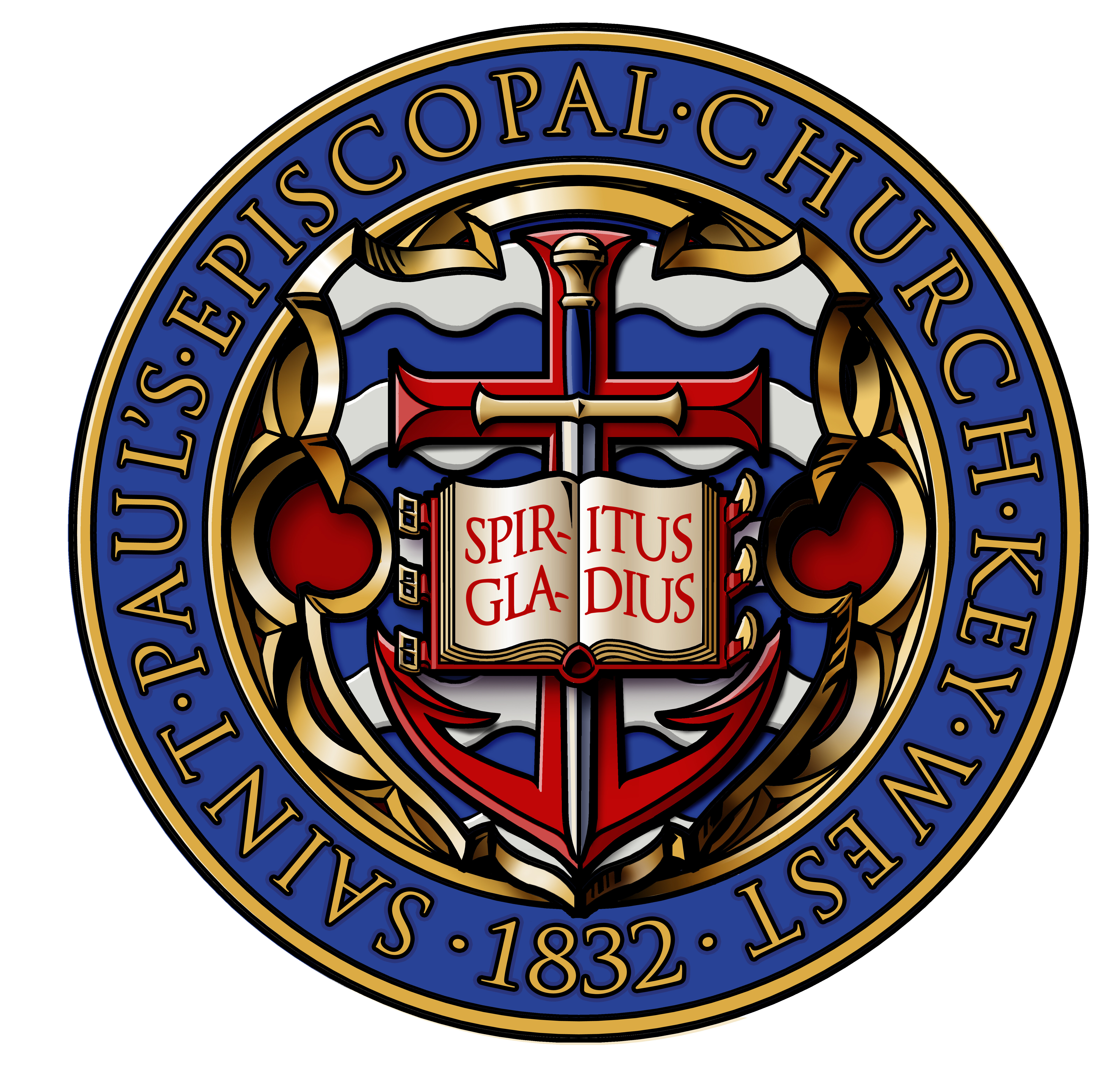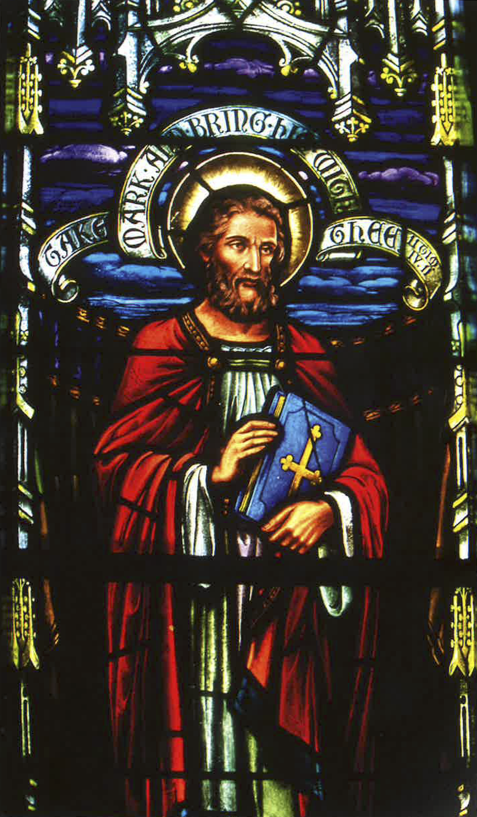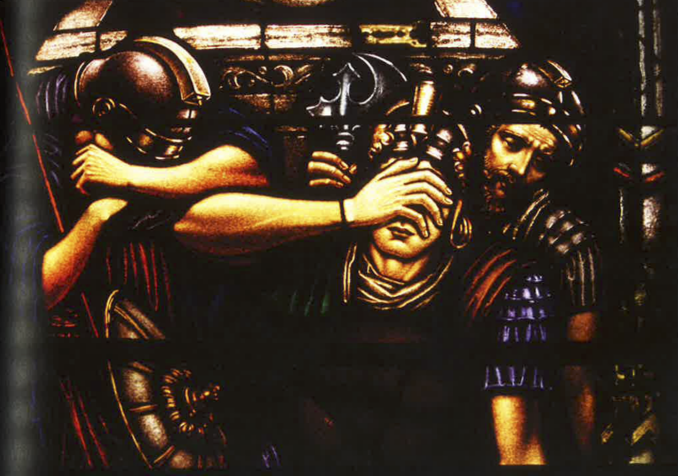
Ascension, Pentecost, Resurrection (Center Panel - Pentecost - Detail #1)
Phipps, Ball & Burnham - Circa 1920
In loving Memory of My Father William Curry
My Mother Euphemia Curry
Charles, George H., Henry F., Robert O. Curry, Brothers
DESCRIPTION: The center panel of the large clerestory window in the north transept celebrates the Pentecost, considered to be the birthday of the Christian Church. The panel features a dove enveloped in a white light, with outstretched wings, just below the Gothic canopy; below it are the thirteen people divided into two groups, representing Mary and the twelve disciples.
In this detail, the Holy Spirit, in the form of a dove, is central. The wings are outstretched and the tail is fanned. The nimbus is Tri-Radiant, symbolizing the Holy Trinity; the dove is enveloped in a flood of light.
THE STORY: The Pentecost celebrates the descent of the Holy Spirit upon the Apostles. The disciples and Mary, the mother of Jesus, were al gathered in one place. Suddenly, there came a sound from heaven like the rush of a mighty wind. And there appeared to them tongues of fire resting on them. And they were filled with the Holy Ghost. (Acts 2:1-4)
MEMORIAL: This detail of the center panel si a memorial to the donor's mother, Euphemia Curry, who was born on Green Turtle Cay, Bahamas on February 18, 1829 settling in Key West at an early age with her parents, Captain John Lowe and Bianca Kemp Lowe. Euphemia married William Curry on his birthday, September 1, 1844 with the Reverend W. C. Maloney officiating. William and Euphemia were the parents of eight children: Charles, Louisa, George H., Henry F., Robert O., Eleanor, Florida, and Milton.
Birse Shephard writes in Lore of the Wreckers that the Curry's lived in a square house with a ground floor of stone and two upper floors of wood, Bahama style. The front steps led up to the main entrance on the second floor, and there were ample porches around the lower stories. The house was white, inside and out, except for the dining room where the walls were painted light green. It was a comfortable, spacious house, yet no better than those of their neighbors. Indicative of their great wealth, however, the family table was set daily with the famous Tiffany gold table ware that cost $100,000 in the 1880s.
Source: The Golden Cockerel: The Art, Symbolism & History of the Stained Glass Windows, St. Paul's Episcopal Church, Key West, Florida by Winifred Shine Fryzel.
Please consider making a donation to St. Paul's so that we may continue our work, including the stewardship of our beautiful grounds, buildings, and windows.



Login To Leave Comment